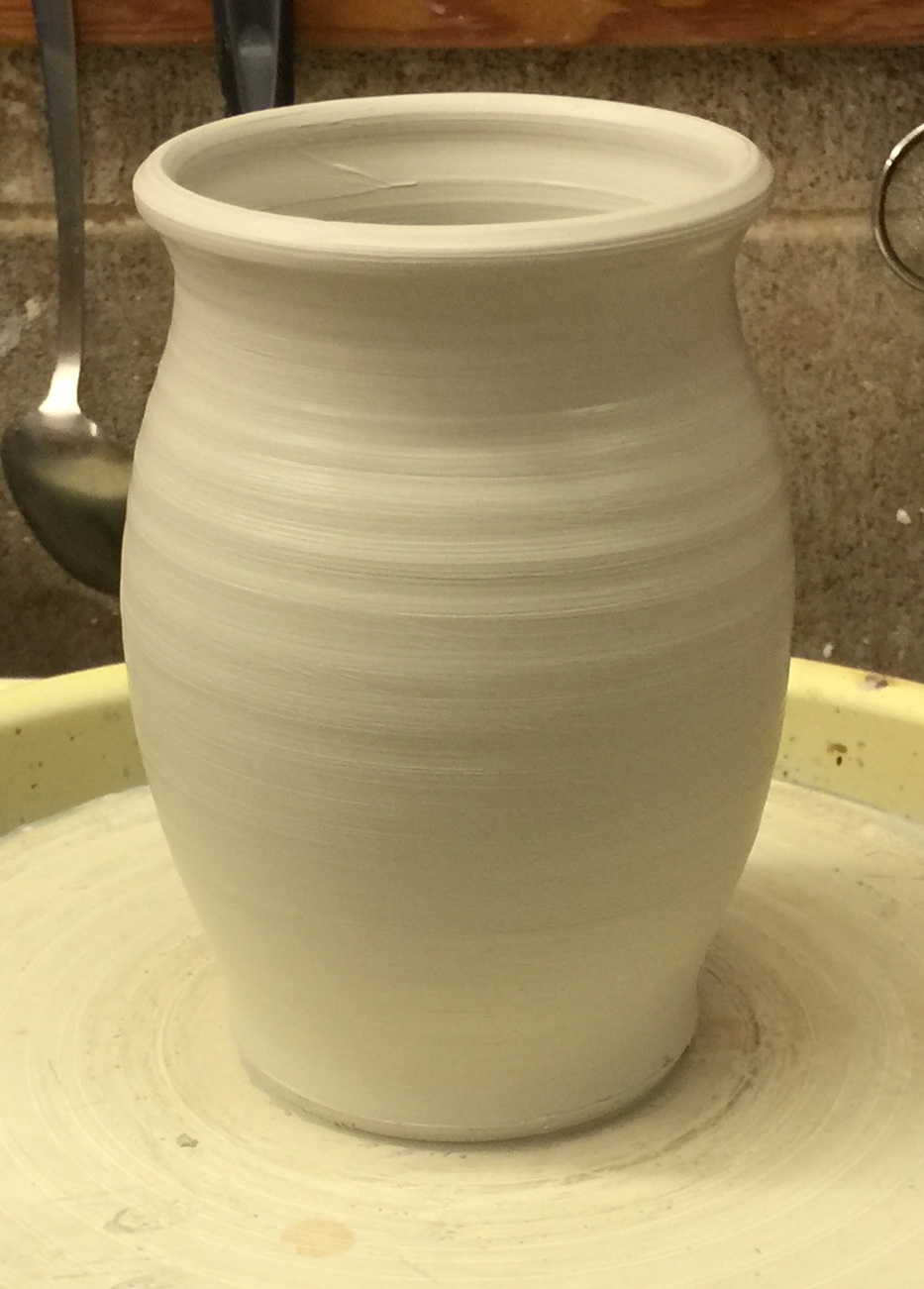This piece is thrown from calcined kaolin. Almost.
It took a lot to be able to throw this moderately bellied vessel because the clay is pure insight-live.com/glossary/137">calcined kaolin. It has zero plasticity. Actually it is worse than zero. That is why 25% bentonite was needed to make it barely plastic enough. That 25% would have done much better with other non-clay materials like feldspar or silica! How can this be? In its natural state, kaolin’s plasticity comes from its layered crystal structure, the water both bonds the plate-like particles together and lubricates their lateral movement against each other. The chemically bound water in the natural kaolinite crystals, which are tiny water magnets, is the secret to their ability to create plasticity - calcining drives it off. This dehydroxylation also changes the crystal structure, converting kaolinite into non-crystalline metakaolin, a particle that is actually hostile to plasticity. Calcined kaolin is also subject to shear thickening, a thin slurry thickens when propeller mixed - the particles form structural resistance, the opposite of what raw kaolin does.
Pages that reference this post in the Digitalfire Reference Library:

This post is one of thousands found in the Digitalfire Reference Database. Most are part of a timeline maintained by Tony Hansen. You can search that timeline on the home page of digitalfire.com.
